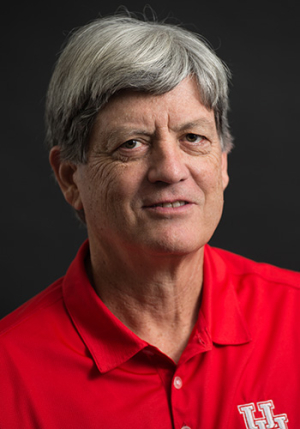Stuart Long, a veteran electrical and computer engineering professor in the Cullen College, has been named the University of Houston’s interim vice chancellor/vice president of research and technology transfer.
Long’s appointment, effective July 6, temporarily fills a vacancy created by Donald Birx who is leaving the post next month to take over as chancellor of Penn State Erie.
The UH System Chancellor and UH President Renu Khator has already appointed a 14-member search committee, chaired by Provost John Antel, to help locate Birx’s successor. Long will serve in Birx’s vacant position throughout the time of the nationwide search.
“I feel honored to be chosen by the president to fill this position over the next few months while a search for a permanent replacement is underway,” said Long. “I look forward to aiding the already successful work of the university faculty and working with upper-level University of Houston administration to continue our rapid progress toward becoming a Tier One research institution.”
In fiscal year 2009, UH surpassed $100 million in research awards, a milestone for the university, and a significant step on the path to becoming a nationally recognized Top Tier institution.
Long will juggle his new leadership role, centered on broadening opportunities for research within the University of Houston system, with existing administrative duties as the university-wide associate dean for undergraduate research and The Honors College.
Long earned both his bachelor’s and master’s degrees in electrical engineering from Rice University and his Ph.D. in applied physics from Harvard. Prior to joining UH in 1974, Long was employed as an aerosystems engineer in the antenna design group of General Dynamics.
Despite holding leadership roles that have included 15 years as a department chair, 12 years as an associate dean of the college and, most recently, interim dean for The Honors College, Long’s career has had a significant focus on research.
Early in his tenure, he launched the Electromagnetic Undergraduates (EMUG) Program, which offers research opportunities to talented undergraduates in his department. Thus far, he has worked with 70 students through the program. Of these, close to half have gone on to pursue graduate degrees at UH in the field of applied electromagnetics.
As a researcher, his work in this same field has produced two new classes of antennas. Developed in the 1970s, the compact, rugged circular microstrip antenna was first used by the military on artillery shells. Since then, the design equations that helped these researchers create the microstrip antenna have been used to adapt it for use in a wide range of applications, including cell phones and other wireless communication devices.
Even more widely known is Long’s work to develop the first dielectric resonator antenna. Unlike the earlier microstrip antenna, these antennas are useful for their efficiency at higher frequencies and were first used in the 1980s in communication systems for the military.
Throughout his career, he has received more than 80 grants and contracts that have surpassed $17 million to support his research. Of this, much of these funds have been focused recently on increasing students’ interest in pursuing science, technology, engineering and math (STEM) majors.
His efforts in laboratory and the classroom have been recognized with numerous awards. These have included the Esther Farfel Award—the highest given by the university—as well as the college’s Senior Research Award, the Fluor-Daniel Faculty Excellence Award and, in 2009, the university’s inaugural Teaching Excellence: Career Award.
